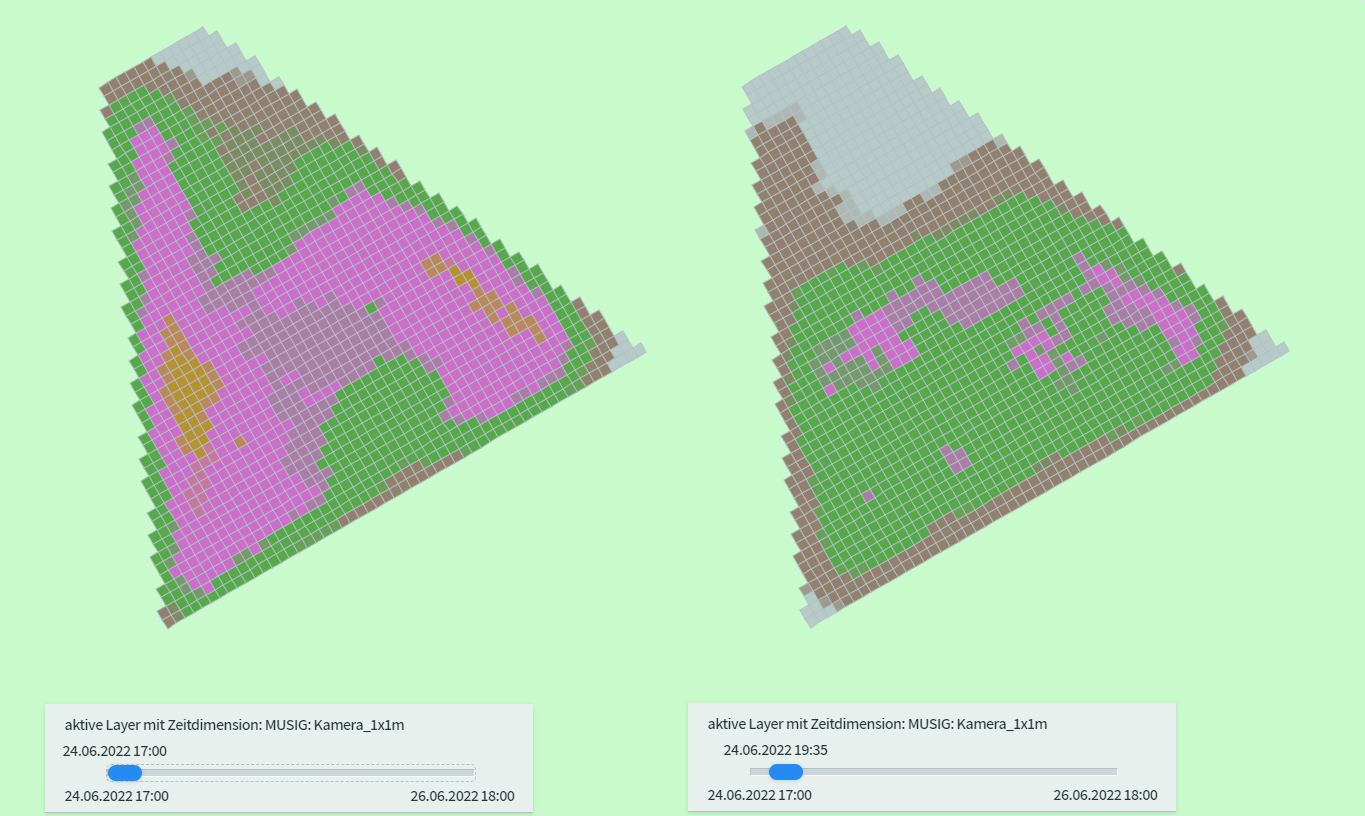Visualizing Time-Sensitive Map Data
With eOCS, users could already visualize static data like background and topographic maps, along with dynamic elements such as operations and resources. Now, the groundbreaking research project “MUSIG” introduces a gamechanging enhancement: the ability to visualize time-dependent and variable data directly within the map component!
To leverage this feature, the data must be formatted correctly, allowing for tailored map layers to be configured for specific user roles in any eOCS system. When a time-dependent layer is activated, a sleek time slider pops up, enabling users to easily select their desired time and view the corresponding data.
A striking example of this capability is the visualization of population density at Vienna’s Donauinselfest (Danube Island Music Festival), where approximately 2.5 million visitors gather at varying times. The time slider provides a quick and intuitive way to observe how population density shifts across various zones throughout the festival, facilitating timely interventions if certain areas become overcrowded.
The potential applications for visualizing time-dependent, variable data are vast. Depending on client needs and available data, numerous scenarios come to mind, such as tracking current water levels in flood zones, monitoring the spread of toxic gas in a chemical facility, or analyzing movement patterns during a demonstration.


